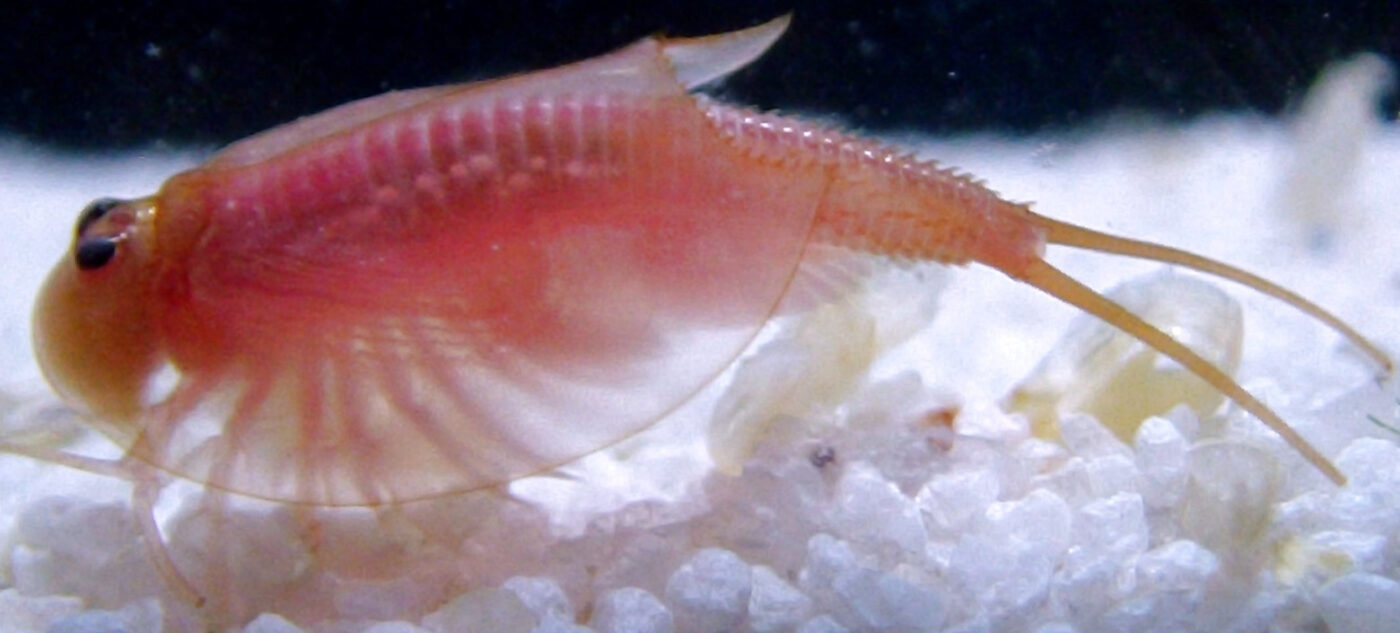Guide
A look at Triops Beni kabuto ebi Albino
In the mysterious world of prehistoric crustaceans, there are numerous species that have populated the earth for millions of years. One of the most fascinating species is the Triops Beni kabuto ebi Albino. These remarkable little creatures are not only biologically interesting, but also a real eye-catcher for aquarists. In this blog post, I would like to introduce you to this special Triops species and share some exciting facts about its life and characteristics.

What are Triops?
Triops, also known as prehistoric crabs or turtle crabs, are small crustaceans that belong to the Notostraca family. They are living fossils, as they have hardly changed for over 220 million years. Their robust and adaptable nature has allowed them to survive different environmental conditions and they are known for their ability to live in temporary bodies of water such as rain puddles and ponds.
Triops Beni kabuto ebi Albino: Uniqueness in white
The Triops Beni kabuto ebi albino is a particularly striking variant of the Triops species. The term ‘albino’ refers to the fact that these animals have a genetic mutation that causes a lack of pigment. This leads to their characteristic white or almost transparent appearance, which distinguishes them from other Triops species, which are usually brown or green in colour.
Habitat and behaviour
Triops beni kabuto ebi albino are found in temporary bodies of water that form after rainfall. These waters often dry up, allowing the Triops eggs to enter a state of diapause – a dormant state that allows them to survive extreme conditions. As soon as the water returns, the eggs hatch and the Triops begin their life cycle.
These Triops are known for their rapid development. Within a few weeks, they can grow from tiny larvae to adults that can grow up to ten centimetres long. During their short lifespan, which is typically only a few months, they are extremely active and constantly on the lookout for food.
Keeping in the aquarium
For aquarists interested in keeping Triops Beni kabuto ebi Albino, there are a few important points to bear in mind. These animals require a suitable habitat that approximates their natural conditions. A small aquarium with clean, untreated water and a sand or gravel substrate is ideal. The temperature should be kept constant at around 22-25°C.
Triops are omnivorous and can be fed a variety of foods, including fish food, vegetables and even small insects. It is important to ensure that the water remains clean, as dirty water can quickly lead to disease.
Fascinating facts
- Rapid growth: Triops Beni kabuto ebi albino can swim out of their eggs within 24 hours of hatching and start looking for food. They can reach sexual maturity in just two to three weeks.
- Living fossils: This Triops species has hardly changed for millions of years, which makes it a fascinating object of study for scientists investigating the evolution and adaptability of organisms.
- Short lifespan: Although their lifespan is relatively short, they make up for this with their ability to lay a large number of eggs that can survive in dry periods.
Triops Beni kabuto ebi Albino – Conclusion
Triops Beni kabuto ebi Albino are a fascinating addition to any aquarium and offer a unique insight into the world of prehistoric crustaceans. Their special colouration and interesting behaviour make them an exciting object of study for both scientists and hobby aquarists. With the right care and attention, you can successfully keep these extraordinary creatures and experience their fascinating way of life up close.
- Triops – Survivors of prehistoric times, heroes of the universe - 17. April 2025
- Aquaristics in Italy – Underwater passion between the Dolce Vita and the Mediterranean - 12. April 2025
- Palaeontology: Giant penguins discovered in Peru - 2. April 2025